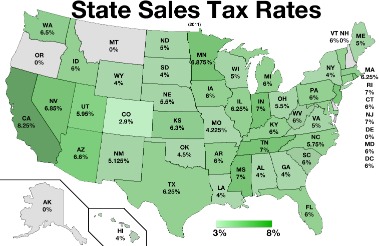Small business accounting: Essential guide for UK businesses

A journal entry is a financial transaction entry in the general ledger. While you could handle accounting for your small business on your own, you may consider outsourcing it to an accounting pro. If you want to get paid faster, you need to understand accounts receivable. An accounting manual is only as good as its ease of use, which depends on its structure and formatting.
Set up a payroll system
She has spent the last five years working on small business content to help entrepreneurs start and grow their businesses. She’s well-versed in the intricacies of LLC formation, business taxes, business loans, registered agents, business licenses and more. Small businesses may be able to find a less expensive basic plan, while larger businesses may need to upgrade to a more expensive standard or premium plan. Once I finished answering the setup questions, I was given access to the platform. The first screen I saw was the “all files” screen, which allowed me to see any files I had stored in my Neat account.
Which accounting software is best for a small business?

For example, when trying to find which menu option allowed me to manage my invoices, I assumed this feature would be found under the “accounting” top menu. Having to click around to find key features added to the product’s learning curve. However, once I became more familiar with the software’s layout, completing tasks required no learning curve, even when setting up advanced actions such as automations. For example, to add a new project, I clicked “time tracking” on the left-hand menu, then the “projects” submenu item. From there, I could click “+New Project” at the top of the resulting screen and fill out a simple form to add my new project. Users give Zoho Books a 4.4 out of five-star rating on Capterra and 618 reviews.
Set up a system to pay tax obligations.
Wave is a simple solution for very small businesses that need a place to consolidate bookkeeping records and invoices, but don’t have to log more than a handful of transactions each day. The free version of the accounting software lets you track income and expenses, send unlimited invoices and automatically send reminders for late online payments. It also gives you access to more than a dozen pre-built financial reports, including a profit and loss statement and balance sheet. Most small-business accounting software costs $0 to $150 per month, with basic plans starting at $0 to $40 per month. These plans allow small-business owners to easily track income and expenses, create and send invoices, and put together financial statements and reports. With its bank reconciliation feature, you can link your bank accounts, PayPal accounts, and other data sources to see real-time business transactions.
Finally, there are many online resources, such as accounting forums and blogs, that can teach you how to use accounting software. These include NCH, Zoho Books, Kashoo, ZipBooks, Sunrise, GnuCash, TrulySmall Invoices and Wave Accounting. Today’s leading accounting platforms offer standard security features such as data encryption, secure credential tokenization and more.
Intuitively, at the top of this screen was a link that gave me the option to add a custom widget (or “Insight”). When I clicked on that link, I was taken to a simple form to name my new widget, choose its data focus (invoices or purchase orders, for example) and filter the report by time period, vendor, item and more. Once I saved the new widget, it was automatically added to the dashboard. Tabs along the top of the accounting page also gave me access to my banking activity.
The app lets you capture receipts and vehicle mileage with your phone’s camera and GPS, respectively. Make sure to consult with a CPA before settling on the method you’ll use. It refers to the legal separation https://www.simple-accounting.org/tips-for-writing-your-first-grant-letter-of/ that exists between a corporation and its owners. In simpler terms, the corporate veil protects the owners of a corporation (and their personal assets) from any legal action taken against that corporation.
Taking online courses can be a great way to learn the basics of accounting for your business. Investing in different areas of your business can be an important next step. You might choose to use document management software to keep track of key financial information and statements. You’ll want to periodically back up your files and ensure that you’re adhering what is the 1099 form for small businesses to security protocols so your information isn’t compromised. For example, if you need to save a copy of a document separately from other files, you may put it in its own password-protected folder inside your document management software. There are numerous software options for small businesses, with QuickBooks and FreshBooks being two of the most popular.
The only difference between the two is that the Established plan has additional features like multi-currency, expense management, and project costing. The monthly subscription for this software can be upgraded as a business grows. The feature-packed mobile app can be used to receive payments, send invoices, capture an image of a https://www.business-accounting.net/ receipt, provide estimates, and more. For businesses looking for a payroll solution, QuickBooks Payroll fully integrates with QuickBooks Online. Stagger bill payments and have a system or methodology behind when and how you pay certain bills. Allow electronic payment systems, which is more convenient and faster in many cases.
- If you’ve just launched or are about to launch your online store, congratulations!
- Tabs along the top of the accounting page also gave me access to my banking activity.
- You’ll be required to maintain a higher minimum amount in the account, and you may have limited check-writing options.
You can skip this step if you’re not planning on hiring any employees. However, even if you’re only hiring an occasional contractor, you should have your payroll system set up. If you’re using accounting software, the accounting cycle is automated, reducing the number of steps drastically. Now that you know the five main account types, you should begin to familiarize yourself with some other accounting basics.

Along with a bookkeeper and a lawyer, the services of a Chartered Professional Accountant (CPA) are indispensable to a small business. A good CPA can help you with lease negotiations, cash and treasury management, and ongoing cash reporting—especially one who specializes in working with businesses in your particular niche. The IRS makes tracking expenses easier by requiring only that you keep records of bills valued at $75 or more. However, to make things simple, we recommend you get into the habit of keeping every document.
As a small-business owner, you’ll want to have an understanding of generally accepted accounting principles (GAAP). It’s not a rule, but it helps you measure and understand your company’s finances. If you’re self-employed (sole proprietorship, LLC, partnership), you’ll claim business income on your personal tax return. Corporations, on the other hand, are separate tax entities and are taxed independently from owners. Note that LLCs (See our state specific guides for California LLCs, Texas LLCs, and Florida LLCs), partnerships, and corporations are legally required to have a separate bank account for business.
At its core, it offers dynamic invoicing capabilities allowing businesses to generate bespoke online invoices tailored to their specific requirements. This adaptability extends to bank connections, integrating with over 9,600 financial institutions across the U.S. and Canada. This ensures that businesses have a singular view of their finances, with the ability to review, edit and reconcile records efficiently. Notable features NetSuite’s accounting software offers include automations, domestic and global tax management tools, a comprehensive payment management solution and NetSuite product integrations. The software also offers tools for businesses requiring financial compliance such as GAAP, ASC 606 and SOX. These insights include profitability ratios, cash positions, liabilities, fixed assets and taxes.
